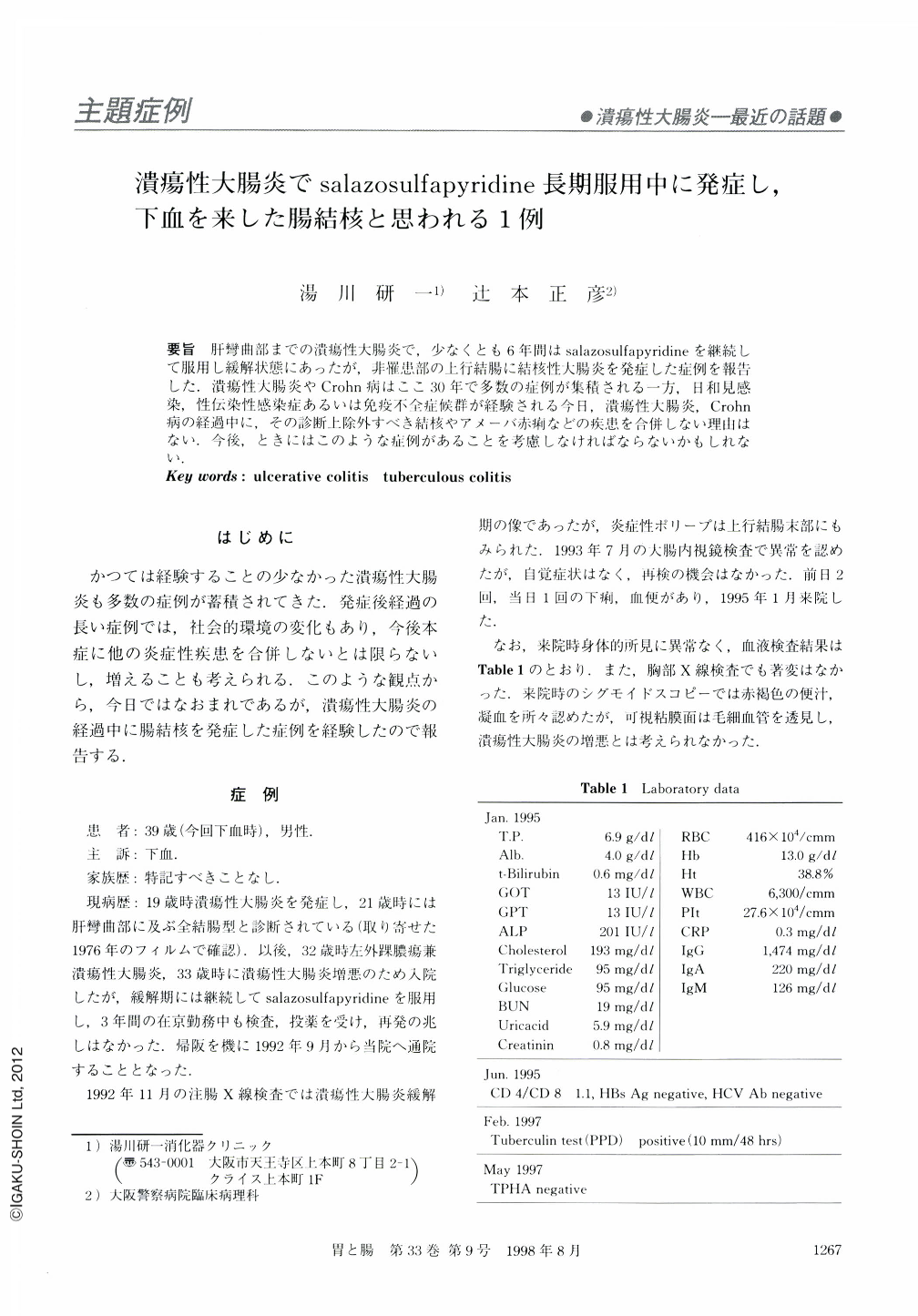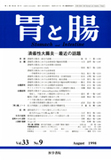Japanese
English
- 有料閲覧
- Abstract 文献概要
- 1ページ目 Look Inside
要旨 肝彎曲部までの潰瘍性大腸炎で,少なくとも6年間はsalazosulfapyridineを継続して服用し緩解状態にあったが,非罹患部の上行結腸に結核性大腸炎を発症した症例を報告した.潰瘍性大腸炎やCrohn病はここ30年で多数の症例が集積される一方,日和見感染,性伝染性感染症あるいは免疫不全症候群が経験される今日,潰瘍性大腸炎,Crohn病の経過中に,その診断上除外すべき結核やアメーバ赤痢などの疾患を合併しない理由はない.今後,ときにはこのような症例があることを考慮しなければならないかもしれない.
We report a case of a patient with ascending colon tuberculosis (Tbc) who has a history of ulcerative colitis (UC) in which the lesion is limited to the hepatic flexure.
The case is a 39-year-old male patient presenting melena. He was first diagnosed as UC at the age of 19 (in the year of 1974) when the lesion was limited to the hepatic flexure from the rectum and he had been hospitalized at 32 and 33 years of age because of worsened UC. Since then for at least 6 years he had been taking salazosulfapyridine (SASP) regularly and was symptom-free. His first visit to our clinic was in Sep. 1992, asking for SASP administration and the necessary follow-up examinations. An X-ray examination in Nov. 1992 showed burned-out colitis in the colon distal from the hepatic flexure. It also showed that the ascending colon was quite intact. An endoscopy in Jul. 1993 showed pictures of UC remission with scattered inflammatory polyps in the area from the hepatic flexure to the rectum and also showed a few erosions and aphthous ulcers in the ascending colon which indicated the early stage of Tbc, although there was no evidence of Tbc in the biopsy. As he had had no symptom, no chance of following re-examination was given. In Jan. 1995, 3 occurrences of melena forced him to visit the clinic. As X-ray and endoscopy revealed the lesion in the ascending colon to have worsened, anti-Tbc drugs were administered with SASP and the lesion was healed (therapeutic diagnosis) . The UC lesion remained in remission.
We emphasize in this article that there is no reason why patients with a history of UC or Crohn's disease would not be subject to other inflammatory colitis such as Tbc, amebiasis, syphiris and so on because opportunistic infections, sexually transmitted infections and lowered immune state by aging would increase. If the patient's UC lesion had been active in our case, the ascending colon lesion might have been thought to be UC which had expanded orally from the transverse colon although endoscopic pictures were somewhat different to that of the UC usually seen, and he might have been treated inappropriately.

Copyright © 1998, Igaku-Shoin Ltd. All rights reserved.


